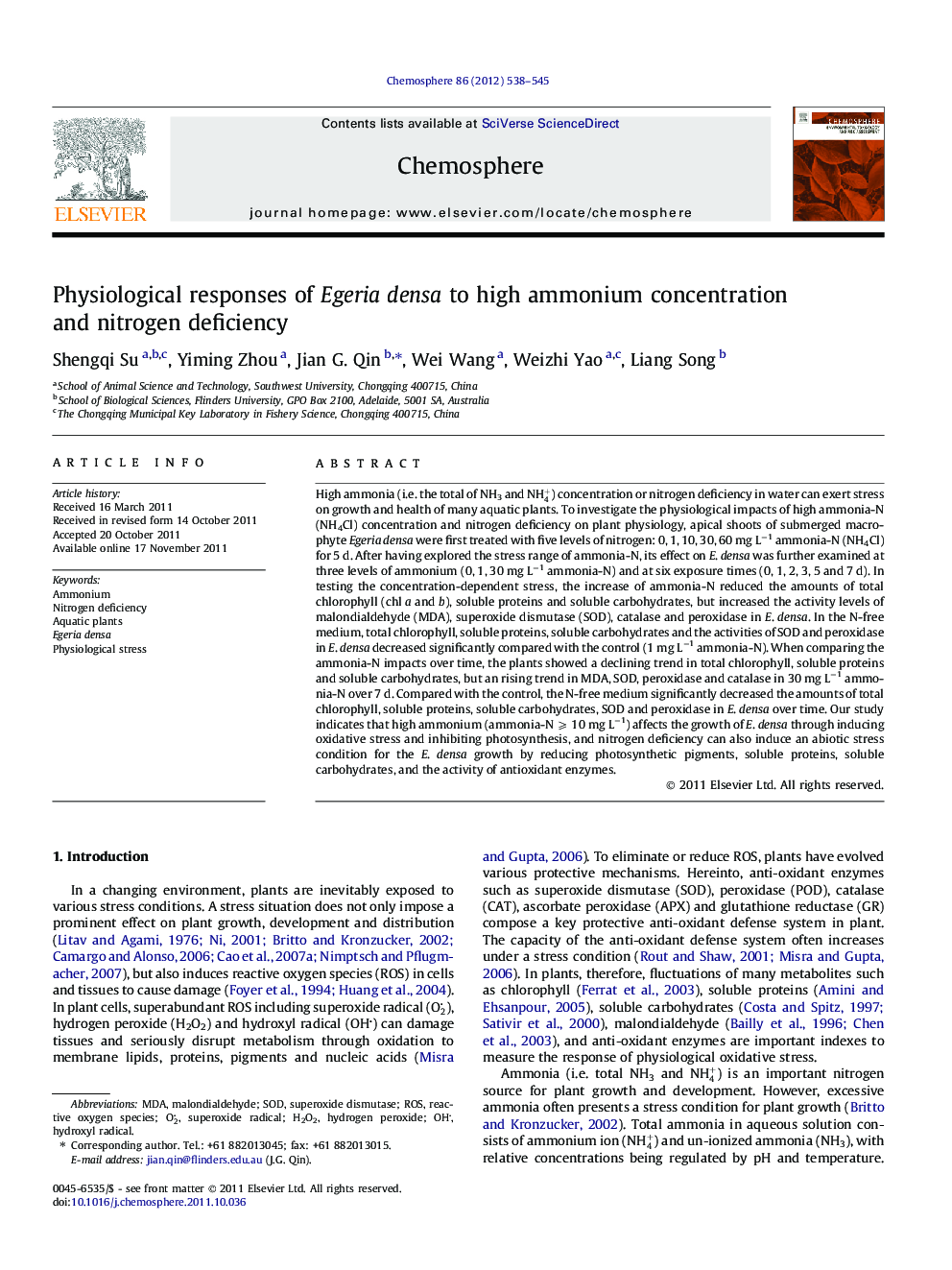| کد مقاله | کد نشریه | سال انتشار | مقاله انگلیسی | نسخه تمام متن |
|---|---|---|---|---|
| 4410515 | 1307549 | 2012 | 8 صفحه PDF | دانلود رایگان |

High ammonia (i.e. the total of NH3 and NH4+) concentration or nitrogen deficiency in water can exert stress on growth and health of many aquatic plants. To investigate the physiological impacts of high ammonia-N (NH4Cl) concentration and nitrogen deficiency on plant physiology, apical shoots of submerged macrophyte Egeriadensa were first treated with five levels of nitrogen: 0, 1, 10, 30, 60 mg L−1 ammonia-N (NH4Cl) for 5 d. After having explored the stress range of ammonia-N, its effect on E. densa was further examined at three levels of ammonium (0, 1, 30 mg L−1 ammonia-N) and at six exposure times (0, 1, 2, 3, 5 and 7 d). In testing the concentration-dependent stress, the increase of ammonia-N reduced the amounts of total chlorophyll (chl a and b), soluble proteins and soluble carbohydrates, but increased the activity levels of malondialdehyde (MDA), superoxide dismutase (SOD), catalase and peroxidase in E. densa. In the N-free medium, total chlorophyll, soluble proteins, soluble carbohydrates and the activities of SOD and peroxidase in E. densa decreased significantly compared with the control (1 mg L−1 ammonia-N). When comparing the ammonia-N impacts over time, the plants showed a declining trend in total chlorophyll, soluble proteins and soluble carbohydrates, but an rising trend in MDA, SOD, peroxidase and catalase in 30 mg L−1 ammonia-N over 7 d. Compared with the control, the N-free medium significantly decreased the amounts of total chlorophyll, soluble proteins, soluble carbohydrates, SOD and peroxidase in E. densa over time. Our study indicates that high ammonium (ammonia-N ⩾ 10 mg L−1) affects the growth of E. densa through inducing oxidative stress and inhibiting photosynthesis, and nitrogen deficiency can also induce an abiotic stress condition for the E. densa growth by reducing photosynthetic pigments, soluble proteins, soluble carbohydrates, and the activity of antioxidant enzymes.
► Egeriadensa can grow well at low NH4+ (∼1 mg L−1) in the water column.
► High NH4+ (>10 mg L−1) can trigger oxidative stress in the E. densa by inducing antioxidant enzymes.
► Nitrogen deficiency accelerates the senescence of E. densa by reduction of photosynthetic pigments.
► Soluble proteins and carbohydrates, and antioxidant enzymes are indicators of E. densa stress.
Journal: Chemosphere - Volume 86, Issue 5, February 2012, Pages 538–545